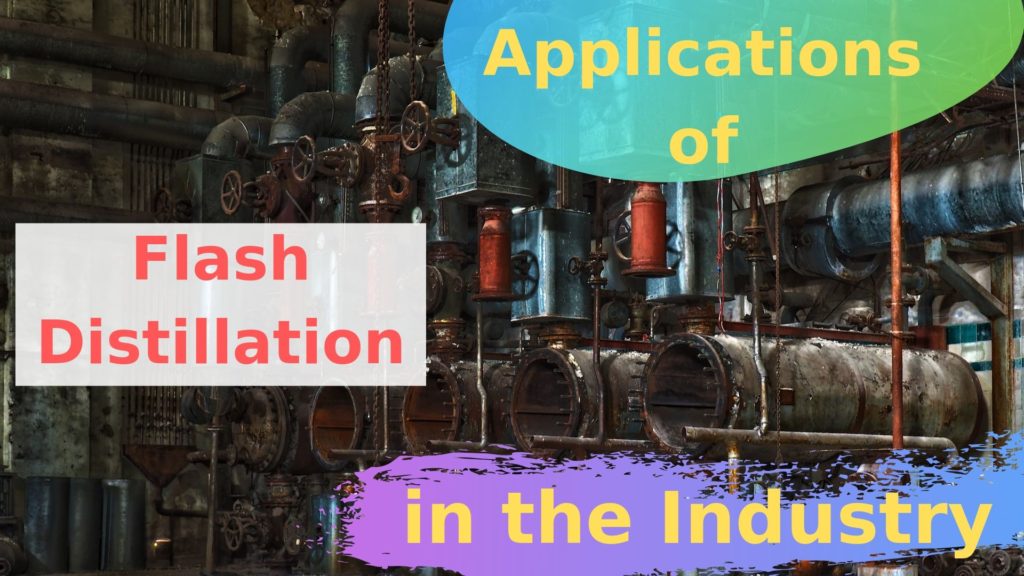Finally! The Course is here!
If you were of those lucky Early Birds then you know by know how great the course is!
If you don’t! Make no worries, we will cover it so you get the idea!
You can read this full blog post or go directly to the SALES Pages of the Course if you want to… In the meantime, check the trailer:
About the Course:
The course is mostly in charge of the process and theory behind Flash Distillation. It focuses in the mass transfer phenomena but also in the operational, design and control part of the Unit Operation – Flash Drums.
It is a powerful course which is based mostly in video lectures of Theory, Simulations, Workshops, Worked Exercises and Proposed Homework.
What is the Course Content?

- A Mass Transfer Review in order to understand the basic principles behind Flash Distillation (Volatility, Raoult’s Law, T-xy diagrams, material balances and so on…)
- Flash Distillation Basics, design, operation, control
- Material & Energy Balances containing the operation line and work on X-Y and T-xy diagrams
- Multi-component Flashing – Alkane systems and other examples
- Simulations and Workshops of Flash Drums and Flashing Systems
- Thumb rules such as the lever rule, application of the Rachford-Rice equation and other sizing approaches
Why is Flash Distillation important?
I prepare a blog post in case you want to broaden your knowledge on Flash Distillation and its applications in the Process & Chemical Industry.
What is the Approach to Learning?
Theory
If you have a strong understanding of the theory, then the mathematical model will be easier to obtain, apply and work with… If you do not have the understanding, there is no sense to work with mathematical formulas and models, it is just a waste of time… Remember, you are the mighty Engineer! Everyone is trusting you!
In this sample, we will see how to get the Operation Line of a Flash Distillation Process. It is very important to understand what we are doing, and why we are obtaining an operation line for this process.
Remember that this is just a sample, check out my teaching style, what do we see, the type of lecture (screencast) and so on… I hope you enjoy 🙂
Check out the Lecture Video [Lecture: Operation Line for Flash Distillation]
(click here)
Exercises
Once you get the theory, it is is crucial to work with numbers, equations and calculations. It really helps a lot to the engineer mind to add numbers, equations and math models to the theory. Many times theory will not be sufficient enough, but when we compliment with an equation or exercises, the engineering mind just “clicks” the knowledge.
All the course is backed up with cool exercises that maximize learning outcomes. I try to use several type of references: several authors, editions, type of industries, applications and so on… This helps you not only to get used to a single type of problem, but to understand that as an engineer you will encounter this type of situation in your daily life.
Check out this video:
Click here to watch the video.
Before we start…
One of the MOST important parts of Flash Distillation, or more precisely Flash Drums, is to understand how these are STAGES.
Once you understand the concept of Stage, it will be much easier for you to understand the difference between Flash Distillation and Fractional Distillation.
- We start with a single flash drum, get the feed into the drum, separate it via flashing and get a enriched Vapor and a stripped Liquid.
- There are many ways in which we can further improve this process…
- The main one will be to add even more flash drums at different temperatures.
- This is called a Flash Cascade System
- In this FIRST approach, we do not use recycle of streams…
In this Lecture, we cover an Interactive Animation. See how the purity of the most volatile material increases in the last vapor stream.
(check out the lecture here)
If you want to download the animation, click here…
Simulation
Simulations are very important as they help us to create “what-if” scenarios in very low time. We can perform multiple simulations of several cases and understand how sensitive the process is versus an input.
We continue with the Flash Cascade System.
Remember that previously, we did NOT used recycle… Which is kinda funny because Recycle is actually very common and intuitive
Lets recycle the streams.
Congrats! You just created a Multi-Stage System!
Here is what we did (Step by Step) (See Video-Lecture)
1. We start simulating a single Flash, verify the inputs and the results

2. We get to simulate more flashes

3. We build a Flash Cascade System and verify results

[Check out the full video-lecture here]
I hope you got value from this post! Ensure to share with your friends and colleagues if you think they might find it useful!
Any comments are welcome… Please use the comment section below:




